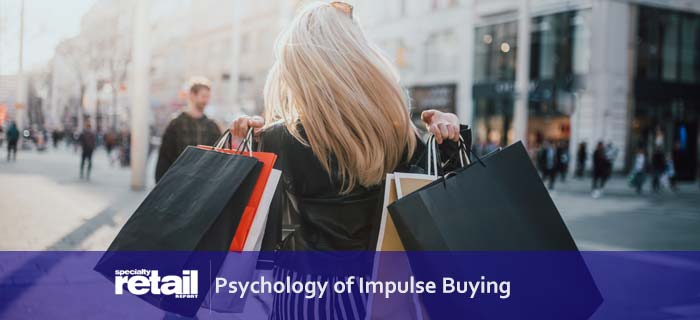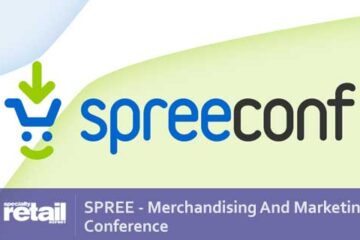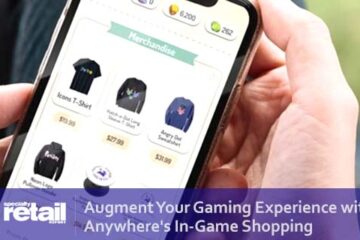When setting up a specialty retail business, it is essential to understand that customers are what will bring you business.
“Why do customers do what they do?”
“What are they thinking?”
“What do they want? How much do they want to spend?”
These are some basic questions that might pop up in a retailer’s head. If only you could open up a consumer’s mind and take a few notes!
If only you could jot down what’s going on in there. Then devise a plan to make them obey your every marketing command. Now that would be severe selling, no?
But you need help to pull out a scalpel and have at it, even if you could get the answers that way. What you can do is learn more about the psychology of consumers. What leads them to make a specific purchase or what triggers them for “impulsive shopping.”
With reliable information from some of the best marketing professors and shopping scientists around, the aim is relatively easy.
Sometimes customers only know what they want once they see it. Therefore, the importance of specialty retail on carts and kiosks heavily depends on impulse buying. It is about how the retailer can “motivate” a consumer to purchase something even if they did not specifically come for it.
“Two-thirds of the shopping that goes on in malls is impulse buying,” says Paco Underhill, author of the book, Why We Buy: The Science of Shopping. “Two-thirds of the entire economy is impulse buying.”
Tim Runner, president of wholesaler ASI (Mission Viejo, CA), agrees. He says most cart products are impulse buys, i.e., unplanned purchases. “Very few people leave their home and say they’re going to the mall to find a cart and buy my products,” he says. “They usually don’t even know what I have until they’re walking by.”
But “unplanned” doesn’t necessarily mean self-indulgent or frivolous, and “instant gratification” is more than just for kicks.
Is Purposeful Shopping Still a Thing?
Purposeful shopping is when consumers realize they need something and set out to get it. They have something in mind that they want to buy.
“People are often somewhere other than a store—maybe at home—when they realize they need something,” says Donald R. Lichtenstein, professor of marketing and associate dean at the University of Colorado Leeds School of Business.
He says consumers undergo what psychologists call “problem recognition” and “actual state of affairs.”
A person realizes she just squeezed out the last squirt of toothpaste (so the problem she recognizes and the actual state of affairs are that she’s out of toothpaste). She decides she can’t do without it, so she goes to the store and buys more. “Having toothpaste then becomes… the ‘desired state of affairs,'” says Lichtenstein.
For an impulse buyer to get started, the first thing to happen is the consumer’s exposure to the product. That is extremely vital in a retail setup. Then the retailer hopes that exposure will trigger problem recognition.
That’s precisely why every grocery, mass-market, and drugstore check-out has a wall of impulse items. So do the cash wraps of department stores, for example, boxed chocolates in Jewelry, mini-cookbooks in Kitchenware, bookstores (pens, eyeglasses, mini-lights), and everything in between!
So the shopper in line at the grocery sees a pack of mints. It reminds him that there were onions on the sandwich he just had (problem recognition). Then he decides to buy the mints.
Why?
It is to create a desired state of affairs: good breath. However, exposure to a product can also trigger a memory of when the consumer needed that product in the past. Lichtenstein says, “The grocery shopper might be thinking, “I could have used these mints when I sat next to that beautiful woman on the plane last week.“
So even if he didn’t think he needed mints right now, he’s likely to buy them “just in case” a similar situation arises. So there’s no profound, dark Freudian thing happening with consumers here. Instead, they have recognized their problem. Whatever it happens to be at the moment; they want it solved, and seeing the product allows them to solve it.
Nevertheless, Virgil Klunder, executive director for Comfort Zone (Cape Coral, FL), a health-and-fitness cart retailer, says that for him, the psychology of impulse buys comes down to two primal human motivations: avoiding pain or experiencing pleasure.
“For every product, I look at the number of steps it takes for consumers to understand how it will help them avoid pain or gain pleasure. The fewer [the] steps, the better that product will do,” he says. “These big companies spend millions on research, and that’s really what it comes down to—avoiding pain and gaining pleasure.”
Seeing Is Buying
Underhill, Lichtenstein, and other psychologists and marketing experts have great news!
Impulse buying is all about seeing the product. So specialty retailers, such as those on carts and kiosks, have the upper hand in a retail setting. You’re in the path—indeed, in the face—of consumers.
“Cart and kiosk operators have an automatic advantage over typical stores because of their exposure to consumers,” says Lichtenstein.
“They’re right out in the open so that everyone walking by can see them, and that’s the first and most important step in impulse buying: seeing the product. So being in their faces and focusing clearly on what you’re selling so they can make a quick selection sums up what a kiosk operator needs to do.”
Lars Perner, a University of California at Riverside professor, agrees. He shares that the more visible the product, the more likely it is to be bought, provided the consumer knows what it is or does.
“The best suggestion I can offer cart managers to increase impulse buys is visibility,” says Perner.
“Visibility is the most important factor. You see the products as you walk through the mall, and you will see more of the merchandise than what’s in the windows of traditional stores. Of course, those stores have to compete for attention with the kiosks and the store windows on the other side of the mall. But it’s much more difficult to overlook a kiosk.“
Underhill says cart and kiosk operators can even let the consumer know what they’re selling gradually. “From 50 yards, get their curiosity up; from 25 yards, make them focus on what you’re selling; and from 10 yards, make them want to stop at the kiosk. It comes down to sight lines and signage.“
Signs proclaiming sales or calling attention to the product may also help. Lichtenstein says you will likely get the “deal-prone” consumer to stop if the movement signals a good deal. “Some consumers are especially susceptible to signage that shows a good deal; they get satisfaction from getting what they perceive to be good prices on products or services,” he says.
“They’ll buy something just for the good feeling they get if they perceive they’re getting a good buy. But, again, it’s the satisfaction of the deal.”
A note of warning, though: “Reference pricing (for example, a product that used to be $40 is now $29.99) will often pull the deal-prone consumer in,” he says.
But attorneys general in several states are starting to crack down on retailers who use reference pricing solely to make sales.
“Retailers need to be careful and only use reference pricing when they can justify that the higher former price was bona fide,” Lichtenstein says.
“If they can’t, [it] may fall into the deceptive-advertising category.”
Color can draw them in. They keep them focused on the product, says Leatrice Eiseman, author of The Pantone Guide to Communicating with Color.
Strong contrast, like black and yellow, is critical. “Bright yellow has been proven to be the most visible color,” she says. “When humans see those colors together, they usually have an instinctive reaction,” an ancient collective memory of predatory animals. “Tigers have those colors, and so humans naturally react to them,” she says.
Of course, she’s not advocating that everyone go right out and buy black and yellow signs. But she does approve of high-contrast colors. She suggests standing several feet away from your cart or kiosk to see how well your alerts stand out against everything around them.
Paving the Way For Impulse Buying
So that’s the gist of impulse buying, and you don’t need a graduate course in psychology to make it work for you.
Assume consumers realize a problem and are looking for the solution (your product). That can happen before shopping until they see the effect that triggers the thought.
Make products easy to spot and highly visible when their problem and your solution intersect; bingo! Impulse buy—a pleasurable experience on both sides of the cash wrap.





